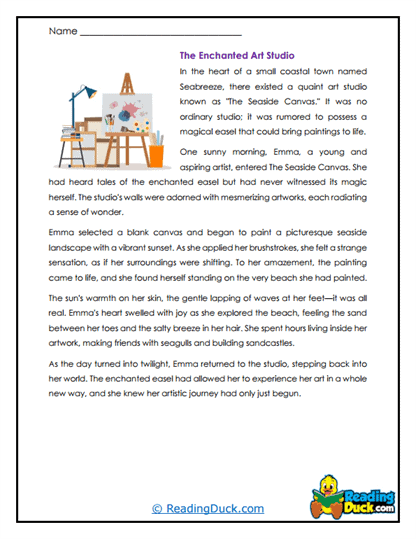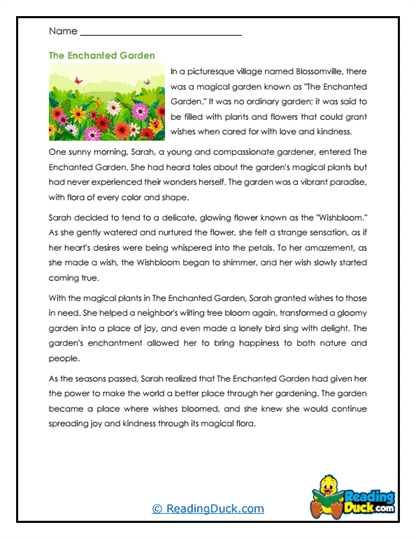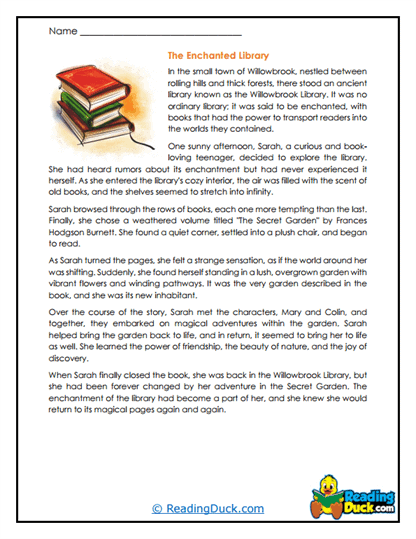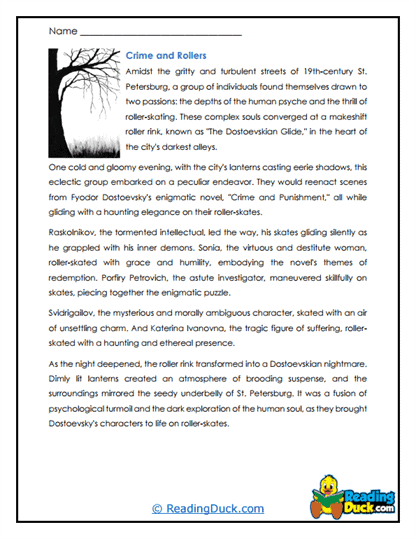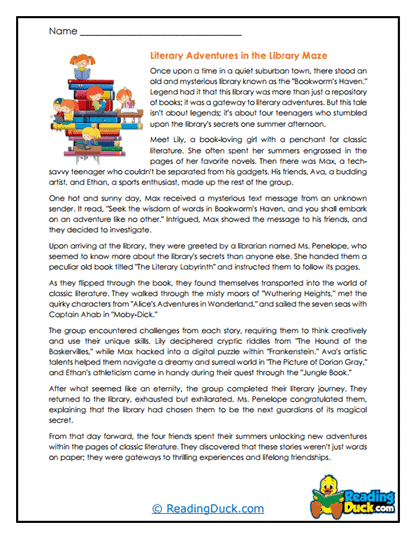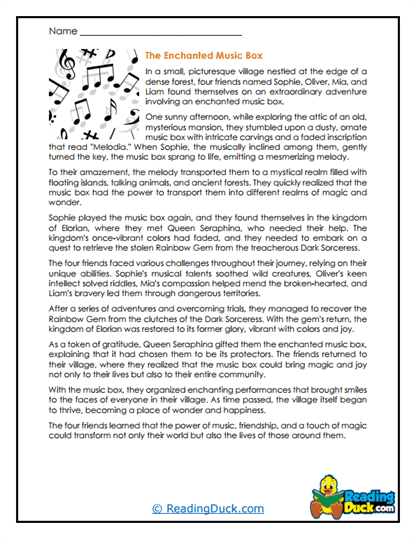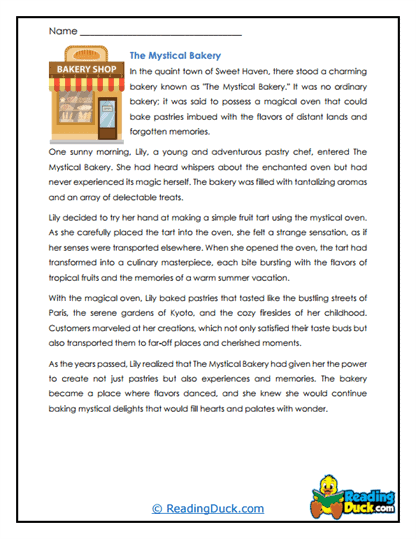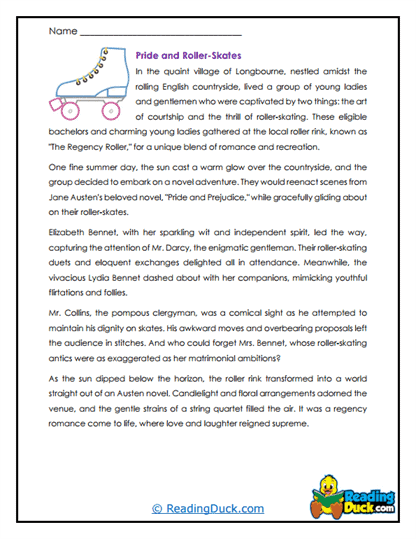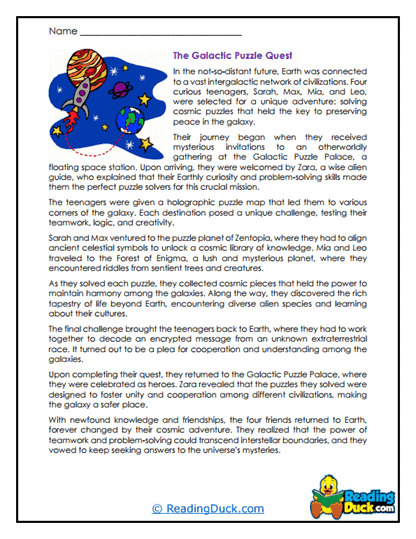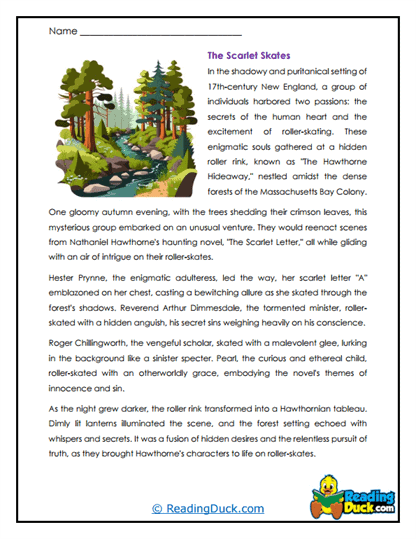Classic Literature Worksheets
About Our Classic Literature Worksheets
Our Classic Literature Worksheets are designed to guide students through some of the most enduring and influential works of fiction ever written. Each worksheet set is centered around a reading passage from a classic work of literature, paired with a range of thoughtfully crafted questions aimed at deepening students’ understanding of the text. These questions come in various formats, including multiple-choice, short-answer, and open-ended prompts, encouraging students to engage with the material on multiple levels.
All of the worksheets are conveniently provided in PDF format, making them easy to download, view, and print. Teachers can effortlessly incorporate these materials into their lesson plans, whether in a physical classroom or an online learning environment. Every worksheet set also includes a downloadable answer key to assist in quick and accurate grading, allowing educators to focus on meaningful discussion and analysis with their students.
By exploring the richness of classic literature through these worksheets, students will enhance their reading comprehension, critical thinking, and creative interpretation skills. Whether used for individual learning or group activities, these worksheets provide a structured yet engaging way to connect students with the timeless themes, characters, and narrative techniques found in classic literature.
The Significance of Classic Literature in Fiction
Classic literature occupies a unique place in the world of fiction, representing works that have stood the test of time and continue to resonate with readers across generations. These are stories that transcend their historical context, offering universal insights into the human condition, societal structures, and moral dilemmas. Some classic works may reflect the cultural and political climates of their time, while others delve into themes of love, ambition, power, identity, and tragedy, which remain relevant today.
One of the defining features of classic literature is its complex narrative techniques. Many classic works employ rich language, intricate symbolism, and multiple layers of meaning, inviting readers to analyze and interpret the text on a deeper level. Additionally, classic literature often explores timeless themes such as moral choice, the search for truth, social justice, and the consequences of ambition. These works are essential for developing students’ ability to engage with fiction in a thoughtful and analytical way, as they require readers to consider not only the plot and characters but also the historical and philosophical contexts in which the works were written.
Our Classic Literature Worksheets help students unlock these layers, guiding them through passages that highlight the narrative complexity and thematic depth of the genre. By answering targeted questions, students will learn to identify symbolism, motifs, and character development, sharpening their literary analysis skills while gaining a deeper appreciation for these works of fiction that have shaped the literary canon.
Worksheet Structure: Deepening Understanding of Classic Texts
The Classic Literature Worksheets are designed to help students engage with these often dense and challenging texts in a structured and accessible way. Each worksheet set includes a reading passage that highlights a significant scene, conversation, or moment from a classic work of fiction. This passage serves as a springboard for exploring the broader themes and narrative techniques of the text.
Following the passage, students will encounter various question types that cater to different aspects of reading comprehension and literary analysis:
- Multiple-choice questions ensure that students grasp the fundamental details of the text, such as plot developments, character actions, or important symbols. These questions test students' ability to identify key elements and engage with the basic structure of the story.
- Short-answer prompts ask students to explore more specific elements of the text, such as a character’s motivation, the significance of a specific event, or the impact of the setting on the narrative. These questions encourage students to analyze and interpret the material in a more detailed manner.
- Open-ended response questions allow students to engage with the deeper themes of the text. These questions invite students to offer their own interpretations, connect the story’s themes to modern issues, or imagine alternative outcomes or perspectives.
For example, after reading a passage from Pride and Prejudice, students might be asked to analyze how Elizabeth Bennet’s response to Mr. Darcy’s proposal reveals her character's independence and moral integrity. This open-ended approach encourages students to think critically about character development and the broader societal themes of the novel.
Fostering Critical Analysis and Creative Engagement
Our Classic Literature Worksheets do more than just reinforce basic comprehension; they challenge students to engage with the material in a critical and creative manner. Classic literature is often dense with layers of meaning, and our worksheets encourage students to peel back those layers through thoughtful questioning.
In particular, the open-ended questions foster deeper engagement with the text, prompting students to reflect on the moral and philosophical questions raised by classic works. For instance, students might be asked how the themes of ambition and downfall in Macbeth apply to contemporary discussions of leadership and power. By connecting classic literature to modern concerns, these worksheets help students see the relevance of these texts in today’s world.
Creative engagement is also a central component of these worksheets. In addition to literary analysis, students are encouraged to think imaginatively about the stories they read. For example, after reading a passage from The Great Gatsby, students might be asked to write an alternative ending where Gatsby makes a different choice, exploring how this change would affect the novel’s message about the American Dream. This creative element not only strengthens comprehension but also allows students to explore the narrative possibilities within classic literature.
Versatile Learning: Individual and Group Use
Our Classic Literature Worksheets are ideal for both individual learning and group activities, offering flexibility for different teaching environments. In a classroom setting, teachers can use these worksheets to facilitate group discussions where students debate interpretations, share insights, and collaborate on creative responses. The open-ended questions provide excellent prompts for class debates or roundtable discussions, allowing students to build on each other’s ideas and deepen their understanding through conversation.
For group projects, students might work together to analyze a specific passage, identify its major themes, and present their findings to the class. Alternatively, peer reviews could be used to critique each other’s creative responses to open-ended questions, fostering a collaborative learning environment where students refine their analytical and writing skills through feedback and discussion.
These worksheets are equally effective for independent study. Students can work through the multiple-choice questions to confirm their understanding of the text before moving on to the more complex short-answer and open-ended prompts that require deeper analysis. This self-paced approach allows students to engage with classic literature at their own speed, making these worksheets an excellent tool for homework, remote learning, or individual projects.
Inspiring Imaginative Thinking and Literary Appreciation
One of the core strengths of our Classic Literature Worksheets is their ability to inspire both imaginative thinking and literary appreciation. Classic works often present timeless questions about human nature, society, and morality, and these worksheets encourage students to consider these questions in new and creative ways.
The open-ended questions, in particular, are designed to spark creative responses to the text. For instance, students might be asked to reimagine a pivotal moment in Frankenstein, where Victor chooses to destroy his creature early on. This activity not only strengthens their understanding of the narrative but also challenges them to explore the consequences of character decisions and consider how authors use plot to convey broader themes.
At the same time, these worksheets help students cultivate an appreciation for classic literature by guiding them through its more challenging aspects. By breaking down complex texts into manageable questions and passages, these worksheets ensure that students can navigate the rich language and themes of classic works while gaining confidence in their analytical abilities.
Conclusion
Our Classic Literature Worksheets provide a robust and engaging way for students to explore some of the most important works of fiction ever written. With a variety of multiple-choice, short-answer, and open-ended questions, these worksheets help students develop reading comprehension, critical thinking, and creative interpretation skills.
Whether used in the classroom for group discussions or individually for self-paced study, these worksheets offer a versatile resource for delving into the world of classic literature. By encouraging both literary analysis and creative thinking, they help students form a deeper connection to the texts and inspire a lifelong appreciation for the timeless stories, characters, and themes that define this genre.
